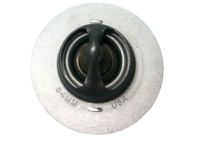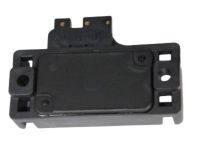
Why choose GMPartsGiant
- Large Inventory
The best site to buy Cadillac Fleetwood genuine parts for years has been GMPartsGiant.com. We're the best online parts and accessory store for your Cadillac Fleetwood. GMPartsGiant.com offers a large parts and accessory inventory to cover all your vehicle's repairs. Feel free to browse through our genuine Cadillac Fleetwood parts and accessory catalog to find all your vehicle's needs.
- Fast Shipping Times
All of our Cadillac Fleetwood auto parts and accessories are expedited directly from verified dealers and backed by the manufacturer's warranty. Our experienced team ensures the orders are packed to provide quick transit times. The majority of the orders are shipped out within a couple of business days to get the parts out to you as fast as possible.
- Low Prices
Our low prices say it all. You can rest assured that you will always receive unbeatable prices on OEM Cadillac Fleetwood parts. Our giant inventory is beyond compare and has everything you need at an extraordinary value not found anywhere else. Whether you're restoring an old vehicle or upgrading the performance of your vehicle you can count on the quality of our products without hurting your bank account.
Popular Genuine Cadillac Fleetwood Parts
- Engine Parts View More >
- Front Suspension, Steering Parts View More >
- Fuel System, Exhaust, Emission System Parts View More >
- Brakes Parts View More >
- Transmission - Automatic Parts View More >
- Frames, Springs, Shocks, Bumpers Parts View More >
- Cooling System, Grille, Oil System Parts View More >
- Interior Trim, Front Seat Trim, Seat Belts Parts View More >
Shop Genuine Cadillac Fleetwood Parts with GMPartsGiant.com
The Cadillac Fleetwood is a luxury vehicle produced by Cadillac from 1976 to 1996, following its initial introduction as a prefix for several Cadillac models post-1935. Characterized by a longer wheelbase than other common models, the Fleetwood transitioned from rear-wheel drive to front-wheel drive in 1985, with the rear-wheel version still in production until 1992. A new rear-wheel-drive Fleetwood was launched in 1993 and ran until 1996. Between 1985 and 1993, the Fleetwood models were built on the front-wheel-drive C-body platform, featuring an initial 4.1 L HT-4100 V8 engine which was later replaced with 4.5 L HT-4500 and 4.9 L HT-4900 engines, increasing the output from 180 to 200 hp. All these models came with a 4-speed automatic transmission. In 1993, the Fleetwood name was designated to the revised rear-wheel-drive D-body, making it one of the first American front-wheel-drive vehicles to revert to rear-wheel drive. It was the longest production car sold in the US at the time, measuring 225 inches. From 1993 to 1996, the commercial edition of the model served as funeral coaches and limousines, replacing the DeVille. Notably, the Fleetwood was discontinued in 1996, along with all other rear-wheel-drive sedans. With genuine Cadillac Fleetwood parts, the car boasts a 121.5 inches wheelbase, a length of 225 inches, a width of 78 inches, and a height of 57.1 inches, making it a standout model in Cadillac's history.
Despite its luxury status and state-of-the-art components, the Cadillac Fleetwood isn't immune to natural wear and tear. Two key issues are prevalent: cooling system failures and problems with the braking and suspension systems. Owners have reported frequent engine overheating and significant coolant level drops in the Fleetwood's cooling system, often necessitating constant coolant additions. Leaked coolant is another tell-tale sign, pointing to the need for a thorough check-up or possible replacement of the radiator and coolant reservoir. For the braking system, drivers have experienced difficulty pressing the brake pedal and increased stopping time, sometimes accompanied by fluid leaks. These issues warrant a comprehensive inspection of the brake booster. Suspension system failures often trace back to a faulty wheel bearing. To extend the lifespan of the Cadillac Fleetwood, special attention should be paid to often overlooked parts such as the emblem, which can fade due to exposure to elements and the door handle that wears out over time. Timely replacement of these components can enhance both the vehicle's aesthetics and operational safety.
To achieve maximum perfection, OEM parts are manufactured and tested in accordance with Cadillac's official factory standards. If you're seeking quality and affordability, look no further than our extensive inventory of genuine Cadillac Fleetwood parts, including Front End Sheet Metal, Heater, Body Moldings, Sheet Metal, Rear Compartment Hardware, Roof Hardware available at GMPartsGiant.com. You can confidently purchase our OEM Cadillac Fleetwood parts as they are supported by the manufacturer's warranty and our hassle-free return policy, alongside the benefit of our fast delivery service.
Cadillac Fleetwood Parts Questions & Answers
- Q: How to remove the Harmonic Balancer on Cadillac Fleetwood?A: To remove the 4.5 L engine, the first step is to disconnect the negative battery cable and take off the serpentine belt. Then, lift up and support the vehicle properly before removing the right front wheel and tire. Take away the right front air deflector as well as support car body-strut at right side and support engine cradle's right side. Lower the cradle on its right hand side and remove the balancer bolt together with washer of harmonic. Using puller, take off balancer.To install an engine, put lubricant between hub and seal using EP lube; then position balancer on crankshaft aligning key slot in hub w/key on crankshaft; bottom hub out on crankshaft using installer tool& install harmonics bolt & washer at that point lighten it to 60 ft lb Raise cradle's right side & raise while positioning ball joint to steering knuckle While raising, support body &right side of engn cradls & insert bolts in itInstall R/Front A/Defl., R/Front Whl/Tire, lower Veh Finally connect Negative-batt cable For 4.9L engine same procedure but tightens harmonic balancer bolt at 70 ft lb For 4.6L Engine unhook negative battery cable; release tension from accessory drive beltOn jack stands raise vehicle-Remove Right Front Wheel-Remove splash shields & brace Support eng cradle remove bolts on R/Side Disconnect RSS sensor use flywheel holder tool to takeout balancer bolt Lower eng cradle install pilot tool into crankshaft Use puller tool to remove hb To install put balancer on crankshaft , use a tool to get HB through Clean hbolt threads tighten it 105 ft-lbs +120 degrees Raise englcradle insb then reconnect suspension position sensors Remove flywheel holder t/install oil pan-t/transmission brace Install Wheelhouse splash shields and Right front wheel Lower vehicle install accessory drive belt Finally connect negative battery cable.
- Q: How to remove and install the thermostat on Cadillac Fleetwood?A: For 4.5L and 4.9L engines, drain coolant, and remove the upper air filter assembly. Next, unscrew the two bolts of the upper thermostat housing, then remove the thermostat. Install a new thermostat and O-ring, reattach the housing, and tighten the bolts. Refill the system, start the engine, and make sure there are no leaks.
- Q: How to remove and install rocker arms on Cadillac Fleetwood?A: To remove and install the rocker arms on 4.5L and 4.9L engines, start by disconnecting the negative battery cable and removing the air cleaner and AIR management valve. Remove the MAP hose from the throttle body and the right side spark plug wires and conduit. Remove the fuel vapor canister pipe bracket and drain the cooling system. Remove the heater hose and brake booster vacuum hose from the intake manifold. Then, remove the rocker arm cover, gasket seals, rocker arms, and rocker arm support. Clean the gasket mounting surfaces and inspect for wear or damage. To install, lubricate the parts with clean engine oil and use a new gasket with RTV sealant. Install the rocker arms and pivots, tighten the pivot bolts, and place each pushrod into the rocker arm seat. Install the rocker arm support, retaining nuts and bolts, rocker arm cover seals, and rocker arm cover. Connect the brake booster vacuum hose and spark plug wires. Install the air management and bracket assembly, replace the heater hose and air cleaner assembly, and connect the negative battery cable. Finally, start the engine and check for leaks. For the left side, follow similar steps, including removing the power steering pump, belt tensioner, and bracket assembly. Replace the accessory drive belt and reinstall the power steering pump, throttle return spring, PCV valve, air cleaner, and negative battery cable.
- Q: What does the MAP Sensor measure on Cadillac Fleetwood?A: The Manifold Absolute Pressure (MAP) sensor measures changes in intake manifold pressure, which is the difference between barometric pressure and manifold pressure. It helps the PCM adjust for different altitudes and controls fuel delivery and ignition timing. The PCM sends a 5 volt reference signal to the MAP sensor, and by monitoring the sensor output voltage, it can determine the manifold pressure. Testing involves comparing the voltage reading to a chart, backprobing the MAP connector, applying vacuum to the sensor, and checking the voltage between terminal C and ground. If the sensor and circuits are functional, the PCM may be faulty. To remove the MAP sensor, the intake manifold top cover is removed, the crankcase breather tube is disconnected, and the sensor is detached from the intake manifold. The MAP sensor grommet should be inspected and replaced if necessary. Installation is the reverse of the removal procedure.




















































